Everyone is familiar with South Korea through K-pop and K-dramas; it’s time to experience it in reality.
This country has evolved into one of Asia’s most exciting travel destinations, drawing millions of visitors with its unique characteristics.
There is a lot of information on the web that helps you travel to South Korea. And the options are endless. You can ski in the mountains, explore historic temples, and relax on pristine beaches, all in one trip.
To have all these wonderful experiences, you need to know all the best places to visit in South Korea. Not just that, knowing your travel style, the type of activity you prefer, and many other factors is very important. With this blog, you can decide the places you will be travelling to.
Overview of What South Korea Offers Its Visitors
|
Must-Visit Places in South Korea
From the beach to the mountains, this country has the best things. The famous Seoul city, an island escape from the busy life or markets that will make you spend a lot. All this gives you the best memories.
Now, let’s see in detail the top places to visit in South Korea that you can choose when you decide to visit.
Seoul
Seoul is energetic for 24 hours a day. Which means you can slurp noodles at 3 AM, hike a mountain at sunrise, and shop for all the world-famous Korean skincare.
What really makes Seoul special is its perfect blend of modernity and tradition. You should plan to stay at least 3 – 4 days to experience everything. And, consider finding a better place to stay in Seoul that is close to metro stations. So, you can easily access places quickly.
Explore different places in Seoul
- Visit Gyeongbokgung Palace and watch the royal changing of guard ceremony
- Explore Bukchon Hanok Village while wearing traditional hanbok attire
- Shop and eat your way through Myeong-dong’s bustling streets
- Take the cable car up to N Seoul Tower for breathtaking city views
- Experience the Seoul nightlife in the Hongdae and Itaewon districts
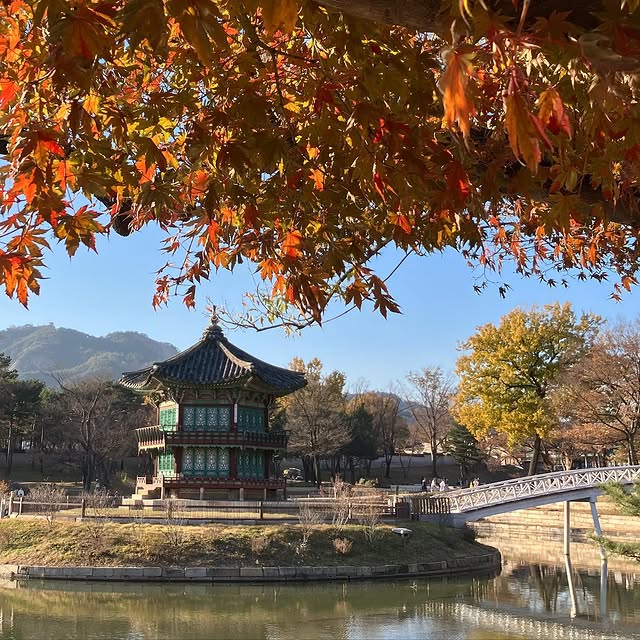
When to go: Spring (March – May) for cherry blossoms or autumn (September – November) for fall foliage.
Jeju Island
If Koreans need a vacation, where will they go? Jeju Island is their spot. It is a popular destination for locals wanting calmness. Numerous film and drama shoots also take place here.
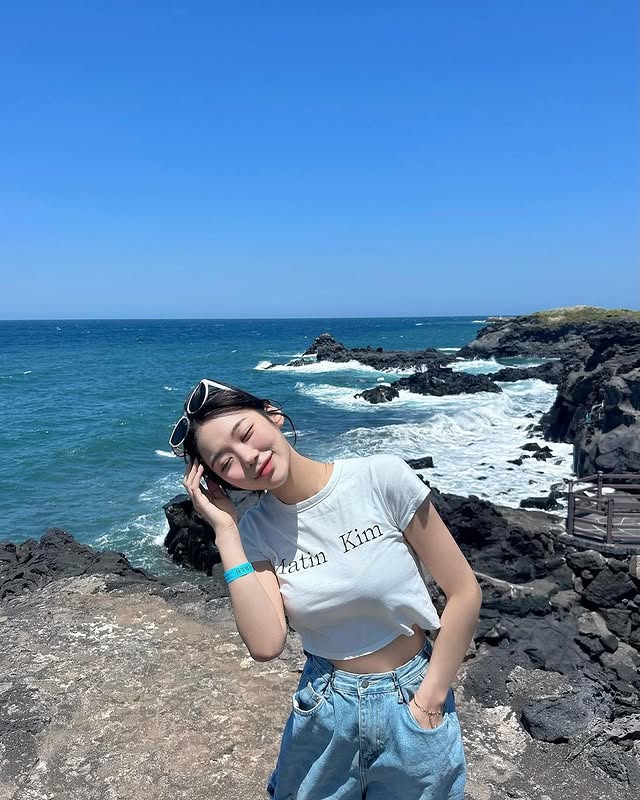
This is a volcanic island located 85 km off the southern coast, formed by volcanic eruptions millions of years ago.
Something notable here is that female divers in their 60s and 70s continue to free dive for seafood. And it is a tradition recognised by UNESCO.
Do adventurous things on Jeju Island
- Hike to the summit of Hallasan Mountain, South Korea’s highest peak
- Explore the mysterious lava tubes at Manjanggul Cave
- Watch the sunrise at Seongsan Ilchulbong (Sunrise Peak)
- Visit O’sulloc Tea Museum and walk through the tea plantations
- Go to South Korea’s beautiful beaches on Jeju Island
- When to go: Year-round destination; best in spring (April – June) and autumn (September – November)
- Location: 85 km off South Korea’s southern coast; accessible only by flight (1 hour) or ferry (3 – 5 hours).
- Ferry Points: Wando, Goheung, Jangheung, Mokpo, and Haenam.
Busan
If you haven’t heard of this city, do you even watch some of the incredible movies out there? The blockbuster film Train to Busan introduced this coastal city to global audiences.
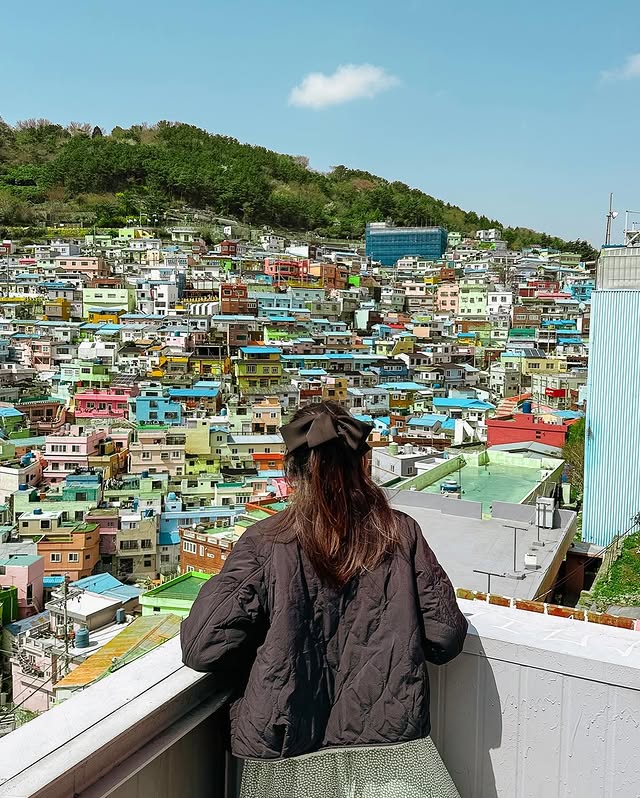
When you are here, you can get the authentic experience of regular life. You can see the fishermen boating for their catch and surfers going for morning waves.
You also have numerous cafes and hiking points that lead directly to the ocean. These are the best places to visit in Busan if you want to take rare photos for your Instagram.
Do scenic things in Busan
- Wander through the rainbow-colored Gamcheon Culture Village
- Visit Haedong Yonggungsa Temple, perched dramatically on seaside cliffs
- Relax on Haeundae Beach and enjoy the waterfront promenade
- Explore Jagalchi Fish Market for the freshest seafood experience
- Ride the Sky Capsule along the scenic Haeundae Blue Line Park
When to go: May to June and September to October, you will get pleasant weather in Busan. And you can avoid peak summer crowds.
DMZ (Demilitarised Zone)
The DMZ is not a random tourist attraction in South Korea. This is the border that separates North and South Korea.
This 4-kilometre-wide buffer zone was established by the 1953 Armistice Agreement, which halted the war, but didn’t officially end the Korean War.

Going here can be overwhelming if you know stories of families. They all got separated by war and were never reunited. This place is worth visiting in Korea to learn about its history.
You can take tours to see checkpoints manned by stone-faced soldiers, tunnels, security areas and more.
Get to know the historical side of South Korea
- Peer into North Korea from Dora Observatory using high-powered binoculars
- Walk through the 3rd Infiltration Tunnel discovered in 1978
- Visit Imjingak Park and see the Bridge of Freedom
- Explore the DMZ Museum to understand the Korean War’s impact
- Tour the Joint Security Area (JSA) with special permission
Tour Cost: Approximately 3,500 INR
Gyeongju
Gyeongju was the ancient capital of the Silla Kingdom, which ruled Korea for nearly a thousand years.
This city is often referred to as a museum city. When you come here, it feels like you have travelled back in time.

The architecture is impressive. The old temples that survived the earthquake show how greatly people worked, even in an era with limited infrastructure.
Things to do in Gyeongju
- Explore the magnificent Bulguksa Temple with its ancient pagodas
- Visit Seokguram Grotto to see exquisite Buddhist sculptures
- Walk in the Daereungwon Tomb Complex for its well-preserved artefacts
- Enjoy evening views of Donggung Palace reflected in Wolji Pond
- Discover artefacts at the Gyeongju National Museum
When to go: Early autumn (September – November) is best, with fewer crowds and perfect weather for hiking and temple visits.
Nami Island
Nami Island gained worldwide fame after appearing in the mega-hit drama “Winter Sonata”.
But this is more than just a shooting location.
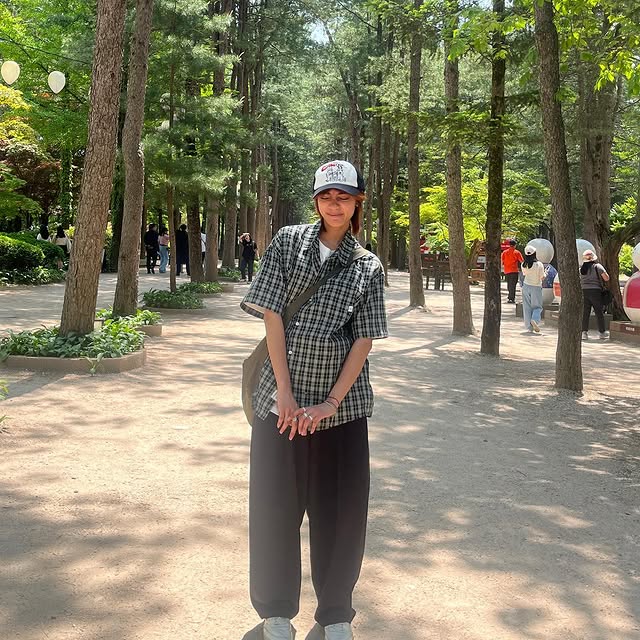
What makes it special? The island banned cars altogether, creating peaceful environments. The roads are lined with trees on both sides, making them perfect for cycling or a leisurely walk.
Whenever you look for the top things to do in Seoul, this place pops up, as it is very close to the city. And this is a quick spot to escape for a refreshing break from urban life.
Experience a picturesque day in Nami Island
- Cycle or walk along the famous Metasequoia Lane, lined with tall trees
- Go in the autumn to see all the foliage displays
- Rent a bike to explore the island’s 5-kilometre perimeter
- Enjoy cultural performances and art installations scattered across the island
- Take the zip line to enter or exit the island for an adrenaline rush
Location: The island is in Chuncheon, Gangwon Province, South Korea.
How to go to Nami Island?
Take the ITX-Cheongchun train from Yongsan or Cheongnyangni Station to Gapyeong Station. From there, you need to take a cab or a 15-minute walk to the Nami Island ferry terminal. Then take a ferry to reach the island.
Seoraksan National Park
Depending on the season you visit Seoraksan National Park, the landscape transforms dramatically, creating a unique and refreshing look each time.

This park is a UNESCO Biosphere Reserve, which means it has strict protection and preservation.
I would say this is one of the perfect places to visit in South Korea during autumn. In this season, you can see a lot of Korean hikers who have been planning this trip all year to see the beautiful colours in the trees before they fade.
There is a lot more, like a cable car ride to Gwongeumseong Fortress for spectacular views, a rock climb, or a visit to Buddhist temples.
Best outdoor activities in Seoraksan National Park
- Hike to Ulsanbawi Rock for panoramic mountain views
- Take the cable car to Gwon Geum Seong Fortress for easier summit access
- Visit Sinheungsa Temple and its towering bronze Buddha statue
- Photograph the stunning Biryong Waterfall along a scenic valley trail
- Explore the various hermitages tucked into mountain cliffs
Timing: 9:00 AM – 6:00 PM
Note: The park is free to enter, but you need to pay if you choose to do any activity inside.
Jeonju Hanok Village
Jeonju Hanok Village preserves traditional Korea. You can see over 800 hanok houses. The neighbourhood is where all elderly residents still practice calligraphy and handcraft traditional paper. And the food here is with perfect recipes passed down through generations.

One interesting fact is that this village invented Bibimbap (Korean mixed-rice dish). They take pride in that, you can have fun watching locals debate which restaurant makes the best version.
Try local experiences in Jeonju Hanok Village
- Take a traditional Korean paper-making (hanji) workshop
- Sample authentic Jeonju bibimbap in the local restaurant
- Visit the Gyeonggijeon Shrine to see portraits of the Kings
- Find the best things to buy, such as traditional crafts, hanji products, and local food items, and many more meaningful souvenirs
Location: 99 Girin-daero, Wansan-gu, Jeonju-si, Jeonbuk State.
Note: You can take a one-day trip from Seoul. Take a KTX Train to reach this village in 1 hour and 55 minutes. You can also stay overnight by renting a hanok house (traditional Korean House).
Boseong Green Tea Fields
Boseong Green Tea Fields are meticulously maintained tea terraces. You can actually
walk between the high tea bushes. When you breathe in the fresh mountain air, you can also smell a subtle tea aroma.
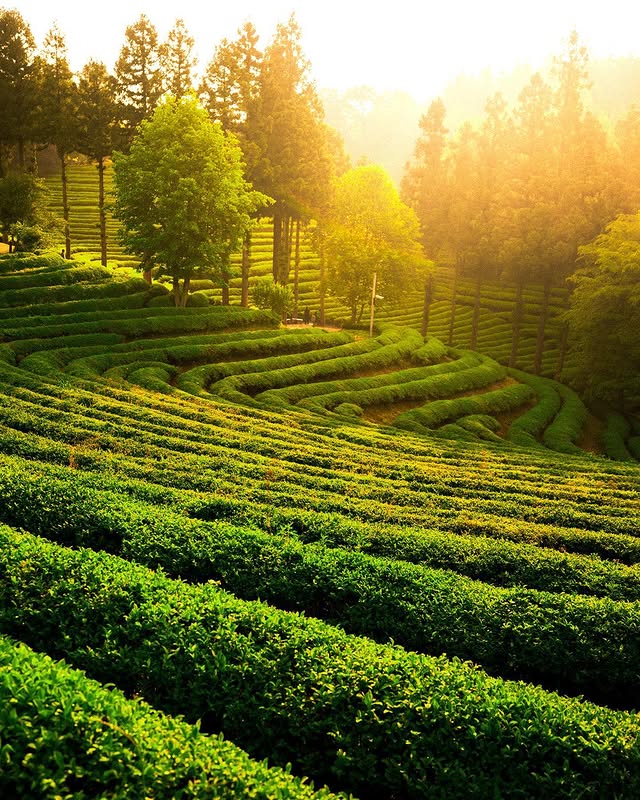
As Korea produces some of Asia’s finest green tea, this place gives 40% of it. Here, you can learn a lot about the tea production as well.
There are numerous ceremonies, such as tea tasting, ranging from traditional tea ceremonies to green tea ice cream and chocolate.
During May’s Green Tea Festival, the fields come alive with cultural performances. There will be tea-picking experiences and vendors selling a wide range of tea products, which you can buy as souvenirs to take home.
Enjoy lush Boseong Green Tea Fields
- Walk through the terraced tea fields along scenic pathways
- Attend the Boseong Green Tea Festival in May
- Sample various green tea products at the on-site tea shops
- Watch tea being harvested and processed (seasonal)
- Visit at night during winter when the fields are illuminated
When to go: Visit the 1st week of May for the Green Tea Festival. Also, year-round to experience the Green Tea Fields.
Andong Hahoe Folk Village
Andong Hahoe differs from other Korean folk villages. This is not just a village turned into a tourist destination for tourists to experience the traditional side of South Korea.
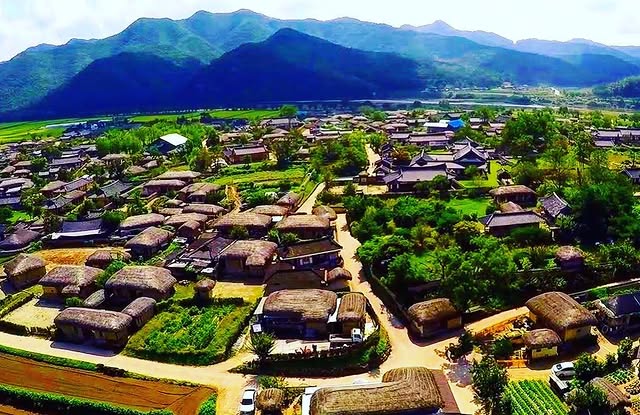
People are still living in these centuries-old hanok houses. And they engage in farming in the surrounding fields and maintain traditions that their ancestors practised.
Here you can witness actual traditional life continuing in the 21st century. The Villagers perform the Hahoe Mask Dance, a centuries-old art form.
Have traditional experiences in Andong Hahoe Folk Village
- Watch the traditional Hahoe mask dance performed by villagers
- Stay overnight in a traditional hanok guesthouse
- Take a boat to Buyongdae Cliff for stunning village views
- Visit the Hahoe Mask Museum to learn about Korean mask traditions
Location: 186 Jeonseo-ro, Pungcheon-myeon, Gyeongsangbuk-do. (4 hours from Seoul)
Changdeokgung Palace and Secret Garden
Changdeokgung got its reputation as Korea’s most beautiful palace to visit not by its size but by the harmony it produces.
You all know Gyeongbokgung, the palace in Seoul; it gives you grandeur. But this palace integrates buildings with the natural landscape.
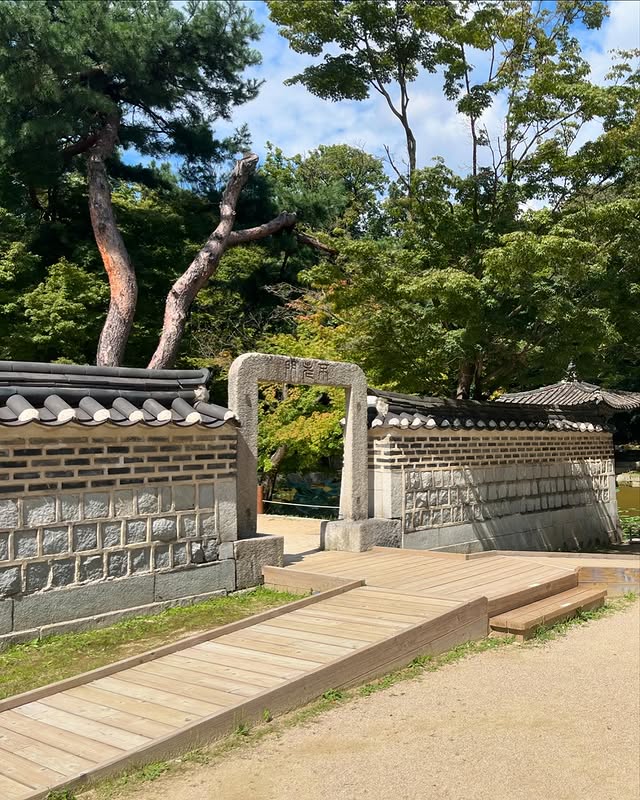
There is a Secret Garden here that lives up to its name with its 78-acre sanctuary. It was exclusively for the royals to relax. If you want to visit this place, you can only take a guided tour.
Historical time in Changdeokgung Palace and Secret Garden
- Join the Secret Garden guided tour (it is mandatory for garden entrance)
- Explore the main palace halls showcasing Joseon-era architecture
- Photograph the iconic Injeongjeon Hall and its courtyard
- Visit during autumn for spectacular fall colours in the garden
- Attend the royal culture experience programs
- Location: Jongno District, Seoul; accessible via Anguk Station (Line 3)
- Timing: Palace: 9 AM – 5:30 PM (closed Mondays); Secret Garden: Book guided tours only
Lotte World
The Lotte World holds the Guinness World Record as the world’s largest indoor theme park.
You might be researching the best time to visit South Korea to experience all the activities. But you don’t need a particular season to go to this park. As it is indoors, you can enjoy it any day.
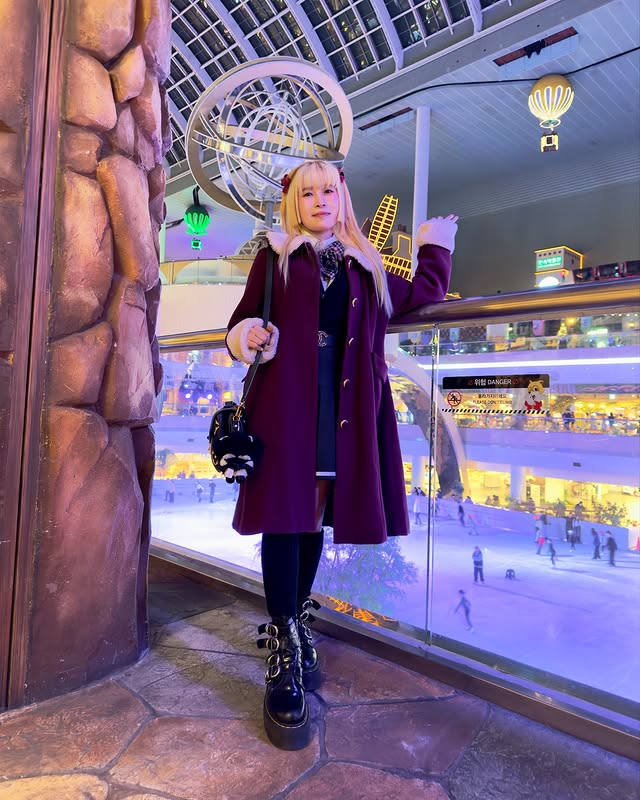
You have massive thrilling rides, an ice rink, a folk museum, luxury shopping, and restaurants all under one roof.
Have an exhilarating time in Lotte World
- Experience the thrilling rides at both indoor and outdoor sections
- Visit the Seoul Sky observatory on the 118th floor of Lotte World Tower
- Watch the spectacular Magic Castle parade and laser shows
- Explore the Korean Folk Museum, showcasing traditional culture
- Enjoy ice skating at the indoor rink year-round
- Location: Jamsil, Seoul; accessible via Jamsil Station (Lines 2 and 8)
- Timing: 10 AM – 10 PM daily; Seoul Sky: 10:30 AM – 10 PM
Gwangjang Market
The Gwangjang Market is a go-to spot. Locals have been eating here for over a century. This market holds an authentic character and remains unchanged despite its growing popularity among tourists.

You will still find ajummas (Korean aunties) making Bindaetteok (mung bean pancakes). If you are a food lover, this is a must-visit place in South Korea. You have a variety of authentic food stalls here.
Best things to shop for in Gwangjang Market
- Try Bindaetteok (mung bean pancakes) at the famous stalls
- Sample some Mayak Kimbap (small rice rolls)
- Enjoy fresh Yukhoe (Korean beef tartare) with Makgeolli (alcoholic milky drink)
- Browse through the vintage clothing and textile sections
- Experience the bustling market atmosphere to find some local products
- When to go: Visit during lunch or early evening for the best food selection. However, the market opens at 9:00 AM and closes around 10:30 PM. At times, there will be a crowd even after the closing time.
- Location: Jongno District, Seoul, near Jongno 5-ga Station (Line 1 Metro)
Hallasan National Park
Hallasan National Park can even dominate Jeju Island. This park stands at 1,950 meters high, making it South Korea’s highest mountain. From its summit, you can see Baengnokdam Lake.

Out of all the places you visited in South Korea, this will be the unique one because you will pass through unique climate zones here. You will start from subtropical forests and end with alpine meadows (grassland).
Do this when in Hallasan National Park
- Hike the Seongpanak Trail to the summit
- Explore the shorter Yeongsil Trail if you are looking for easy hiking
- Photograph rare alpine plants and wildlife that are found only on Hallasan
- Visit Baengnokdam Lake at the summit
- Experience changing ecosystems as you ascend
- When to Go: May to June is suitable for hiking
- Opening Time: 5:00 AM to 6:00 AM
Myeong-dong
Myeong-dong area is Seoul’s unofficial Korean beauty headquarters. You can find every skincare and makeup product here. You also have fashion boutiques and street food stalls from morning to midnight.
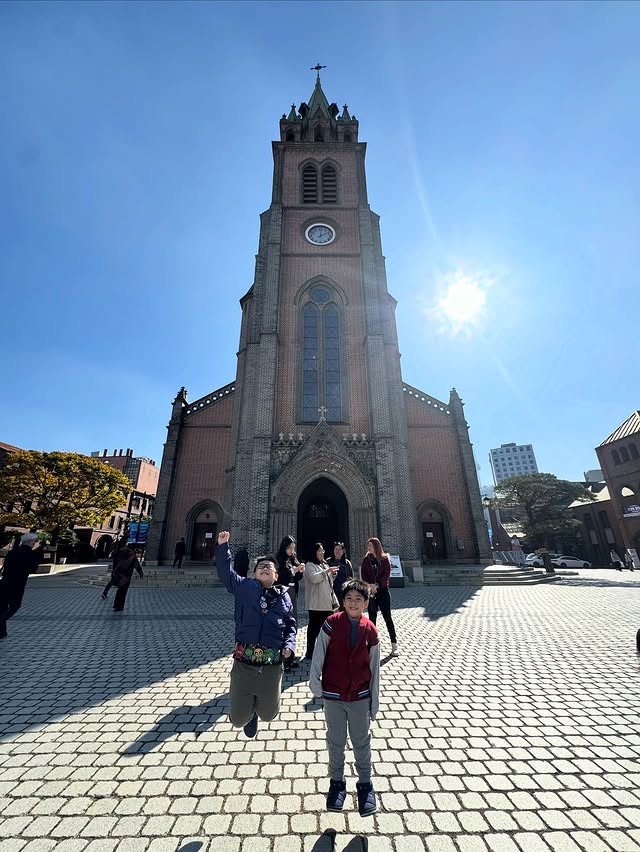
This area offers a vast selection of brands. You will see sales assistants who speak multiple languages, so you can ask them any doubts you have. Additionally, they will offer generous free samples in most stores.
Shop for various things in Myeong-dong
- Shop for Korean skincare and cosmetics at premier retail stores
- Sample various street food
- Visit Myeongdong Cathedral, Seoul’s first Catholic church
- Explore multi-story fashion buildings for trendy Korean clothing
- Enjoy live street performances and K-pop music while shopping
- When to go: Weekday evenings are less crowded than weekends
- Location: Jung District, central Seoul; Myeongdong Station (Line 4 Metro)
Suwon Hwaseong Fortress
Suwon Hwaseong fortress wall goes up nearly 6 kilometres around the city centre. When you walk here, you will know why UNESCO granted World Heritage status to this place. It is so majestic.
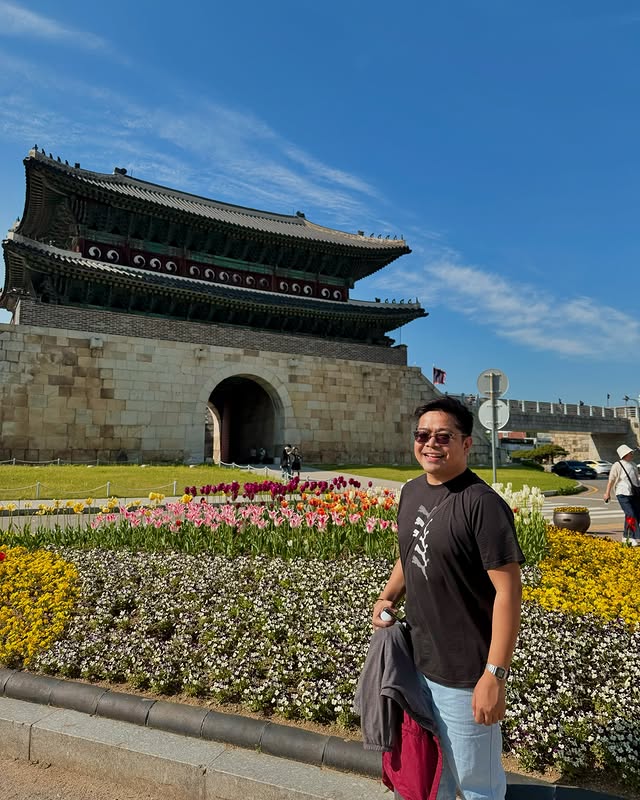
It was built in the 1790s. King Jeongjo designed this fortress with both emotional purpose (honouring his murdered father) and with excellent practical brilliance.
The fortress showcases innovative military architecture, secret gates for attacks, cannon positions, and guard posts.
Don’t miss these when visiting Suwon Hwaseong Fortress
- A short hike of the 5.7-km fortress wall for panoramic city views
- Explore Hwaseong Haenggung Palace, which was the king’s temporary residence
- Photograph the four main gates, especially Paldalmun and Janganmun
- Watch the traditional guard ceremony
- Rent bikes to cover more ground along the fortress perimeter
- Location: 320-2 Yeonghwa-dong, Suwon city, Gyeonggi Province. (1 hour from Seoul)
- Timing: Fortress walls are open 24/7; Hwaseong Haenggung Palace: 9 AM – 6 PM.
Bukhansan National Park
You can find Bukhansan National Park within the city limits, but it’s surprising how it offers jungle experiences.
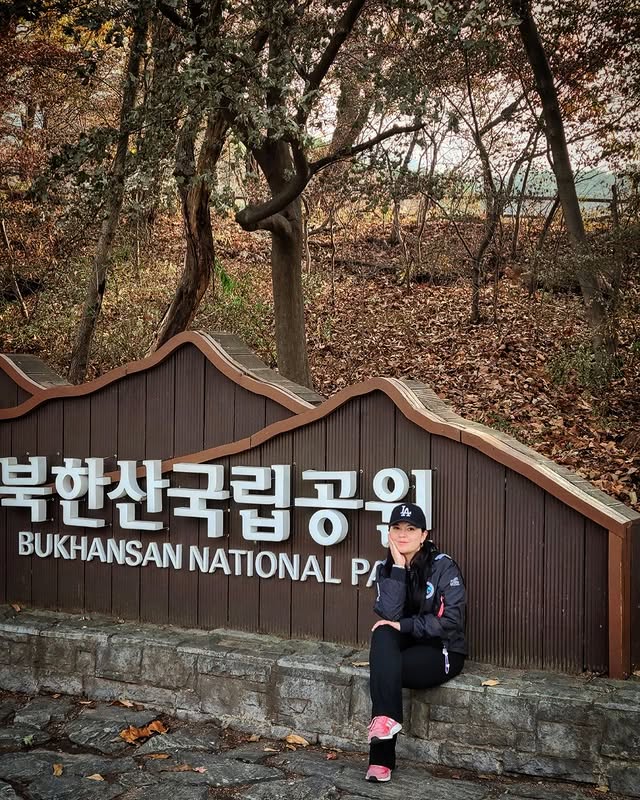
This location is also regarded as one of the best spots for hiking. Koreans take this activity seriously. So, you will encounter everyone from elderly ladies to young couples on weekend dates.
Have a nature time when in Bukhansan National Park
- Hike to Baegundae Peak for 360-degree views of Seoul
- Visit Samgaksan Doseonsa Temple, nestled in the mountain valley
- Tackle the challenging Insubong Rock for rock climbing adventures
- Walk the Bukhansan Fortress wall remnants
- Location: 262 Bogungmun-ro, Seongbuk District, Seoul, South Korea (accessible by subway and bus)
- Park Timing: 4:00 AM to 5:00 PM
Dadohaehaesang National Park
Do you know Korea has over 3,000 islands? And, this Dadohaehaesang National Park protects the most beautiful stretch of this hidden archipelago.

These islands are scattered across and each has a different vibe. You can do island-hopping by ferry to explore all the best spots. You have dramatic coastal scenery, hidden beaches accessible only by boat, and a traditional culture in these islands.
Experience scenic time in Dadohaehaesang National Park
- Take ferry tours to explore multiple islands in one day
- Visit Cheongsando Island, designated as a “Slow City”
- Enjoy fresh seafood at traditional fishing village restaurants
- Kayak between smaller islands for an active adventure
- Photograph stunning coastal sunsets from various viewpoints
- Location: 446-1 Geumo-ro, Nam-myeon, Yeosu-si, Jeollanam-do, South Korea
- Time: 9:00 AM to 6:00 PM
Pyeongchang-gun
Pyeongchang-gun gained global fame hosting the 2018 Winter Olympics. But more than that, you get an all-year-round mountain country vibe.
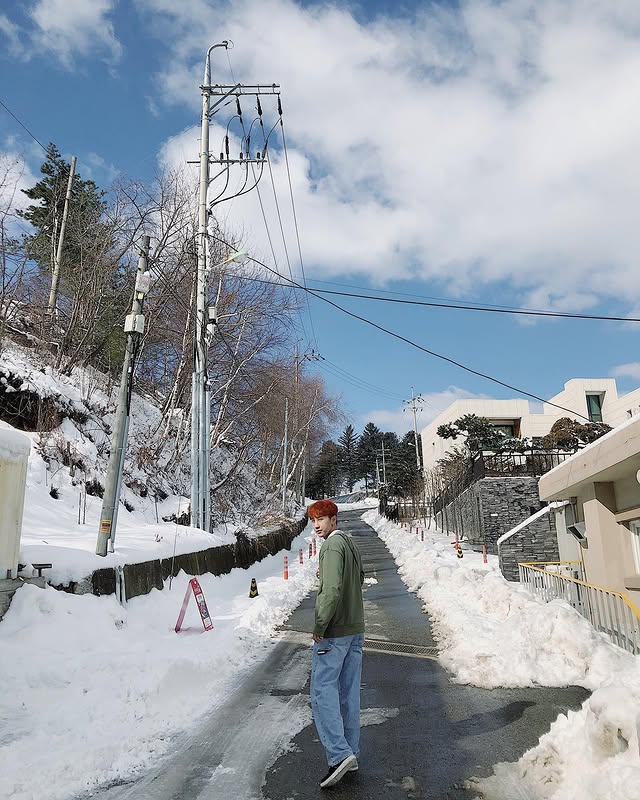
What makes Pyeongchang worth visiting? The county showcases mountain culture and features centuries-old Buddhist temples nestled in valleys.
Then you have traditional markets that sell mountain vegetables and so many handmade things by the locals who live there.
Never miss these things in Pyeongchang-gun
- Ski or snowboard at ski resorts
- Visit Olympic venues, including the sliding center and stadiums
- Explore Woljeongsa Temple for spiritual tranquility
- Hike Odaesan National Park during warmer months
- Attend the annual PyeongChang Trout Festival in winter
- Location: Gangwon Province; 2.5 hours from Seoul
- Best Time: Ski season is late November – March
Incheon
Incheon is a neighbouring metropolitan city to Seoul. And Incheon International Airport (ICN) is where most travellers land to explore South Korea.
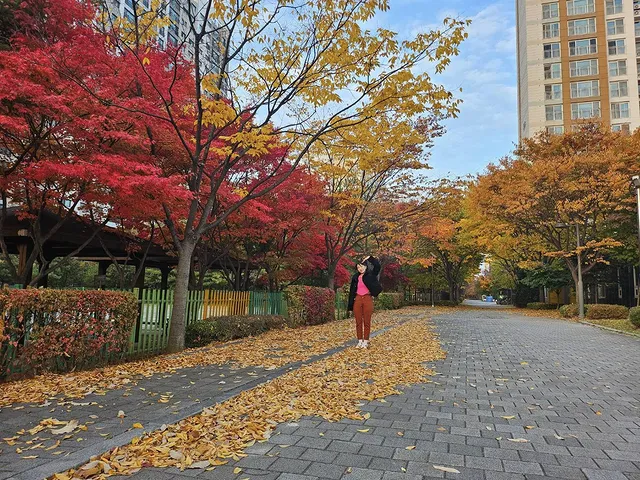
This place is visited only as a transit point to travel to Seoul. But this city is worth exploring as the neighbourhoods here reflect different historical periods.
You have traditional Korean quarters, Chinese-style streets with red pagoda gates, colonial-era buildings, and Songdo’s ultra-modern “smart city”. This is one place you must visit in South Korea to witness the remarkable evolution.
Try all the fun things in Incheon
- Explore Korea’s only official Chinatown with its unique architecture
- Visit Wolmido Island for amusement parks and ocean views
- Discover Songdo Central Park’s futuristic waterfront district
- Take ferry trips to nearby islands like Muuido and Baengnyeongdo
- Visit the Memorial Hall for the Incheon Landing Operation
Location: Home to Incheon International Airport, your central landing spot for tourists. (an hour from Seoul)
Cheonggyecheon Stream
Cheonggyecheon Stream is an 11-kilometre stream that flows peacefully through the city centre. Along the stream, you’ll find walking paths, art structures, and bridges, giving you a great metropolitan vibe.
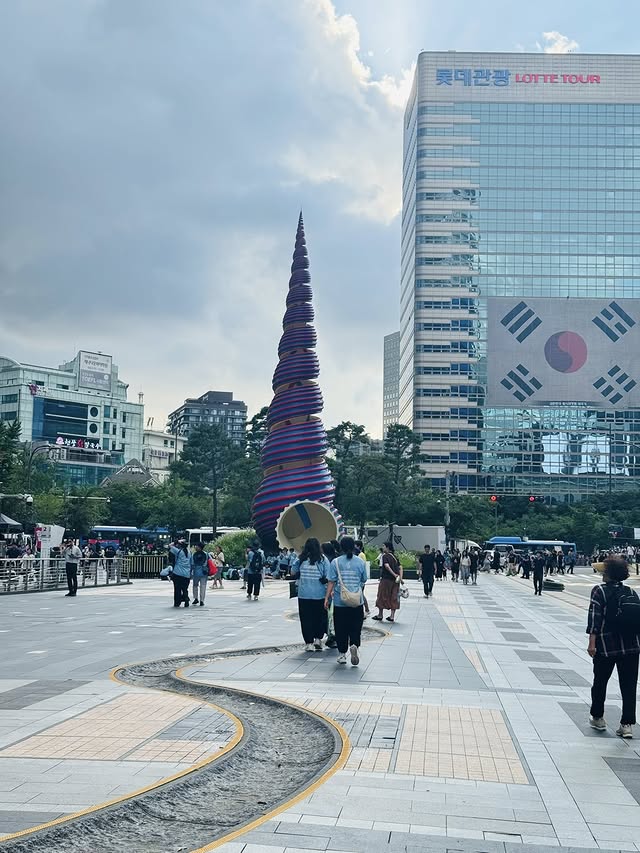
What makes this remarkable is that Seoul demolished the highway and uncovered a 600-year-old stream that had been buried under concrete.
Explore unique things in Cheonggyecheon Stream
- Walk along the stream from Gwanghwamun to Dongdaemun
- Cool off in the stream during hot summer days
- Enjoy seasonal festivals and art installations along the banks
- Take pictures of the illuminated fountains and bridges at night
- Visit during the lantern festivals when thousands of lights float on the water
Location: 1 Cheonggyecheon-ro, Jongno District, Seoul.
Haeinsa Temple
Haeinsa Temple holds Korea’s greatest treasure, which was carved in wood 750 years ago.
The temple’s Tripitaka Koreana consists of 81,258 wooden printing blocks containing Buddhist scriptures. And they have survived fires and wars.
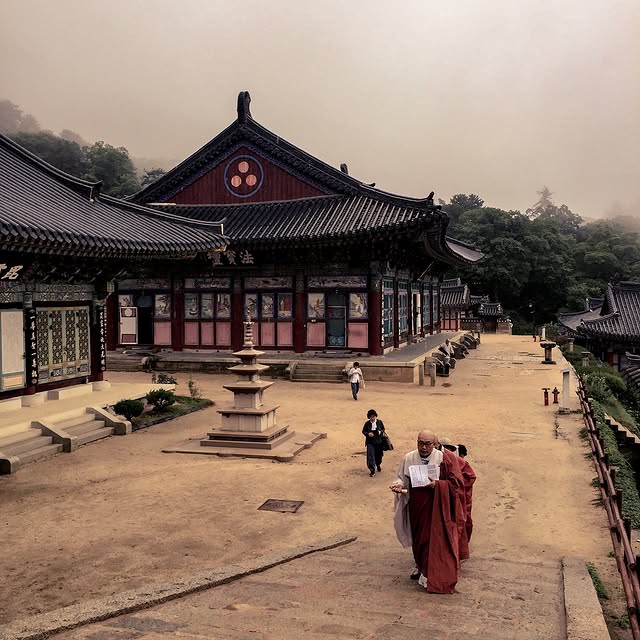
This temple is a 13th-century wonder with perfectly positioned windows, ventilation systems, and foundations that naturally regulate temperature and humidity.
Spiritual things you can do in Haeinsa Temple
- Visit Janggyeong Panjeon halls storing the Tripitaka Koreana (scriptures)
- Participate in a temple stay program for an authentic Buddhist experience
- Hike trails in the surrounding Gayasan National Park
- Attend morning prayer services around 3:30 AM
- Explore the numerous smaller religious retreats scattered around the mountain
Location: 122 Haeinsa-gil, Gaya-myeon, Hapcheon-gun, Gyeongsangnam-do, South Korea
Sokcho Coast
Sokcho thrives on the East Sea. Which means you get to see fishing boats dropping tons of fish, and ajummas sell the freshest raw fish you’ve ever tasted. Basically, the city’s entire economy revolves around this seafood.
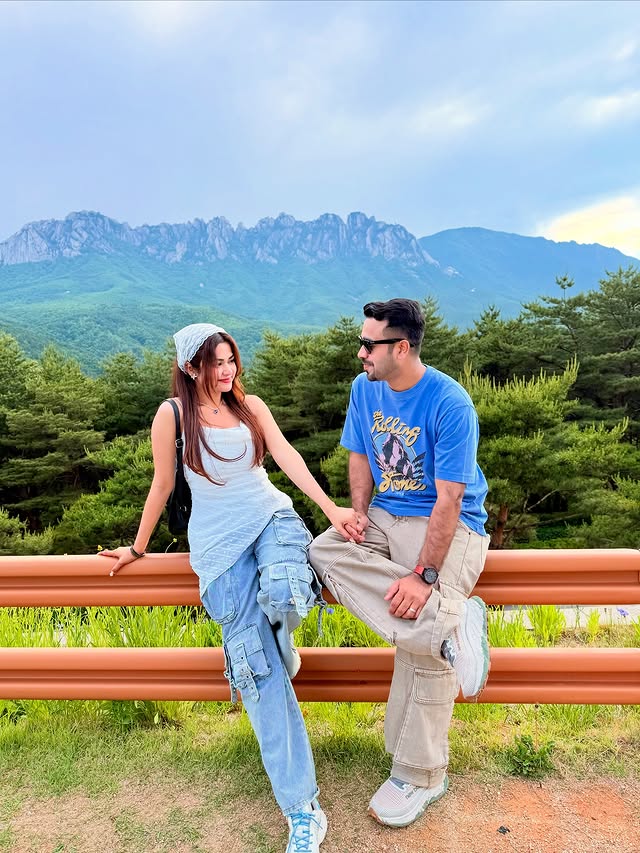
However, Sokcho isn’t just about food (though the food alone is a good reason to visit). This port city serves as a base camp for Seoraksan National Park while maintaining its own gritty coastal character.
Live a secluded life in Sokcho Coast
- Feast on fresh squid and raw fish at Sokcho Tourist & Fishery Market
- Visit Abai Village, accessible by a unique hand-pulled ferry
- Relax at Sokcho Beach with views of the East Sea
- Hike nearby Ulsanbawi Rock in Seoraksan National Park
- Explore Yeonggeumjeong Pavilion for coastal sunrise views
- When to go: September – October for comfortable weather and seafood season
- Location: northeast of Gangwon Province; 3 hours from Seoul.
Chuncheon District
Chuncheon is gaining fame through K-dramas rather than the country’s tourism marketing. You would have seen these places in Winter Sonata and everyone’s favourite drama, Boys Over Flowers.
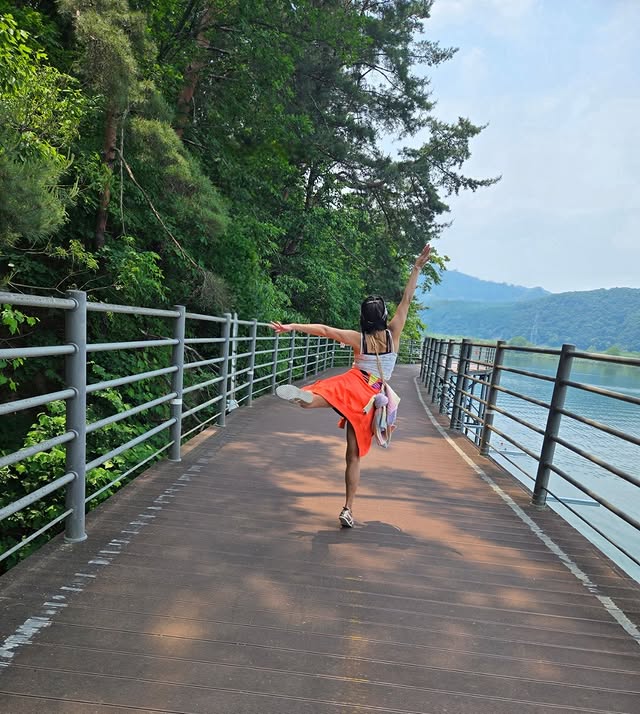
Here, you have lakeside scenery and a mountain backdrop that provide settings for multiple hit shows.
The best thing here is that in this district, you can enjoy the Gangchon Rail Bike, which allows you to pedal along inactive train tracks beside rivers and through tunnels.
Things to do in Chuncheon District
- Take the Gangchon Rail Bike along scenic lakeside tracks
- Visit Nami Island via ferry
- Try authentic Chuncheon dakgalbi (spicy stir-fried chicken) at Dakgalbi Street
- Cruise on Cheongpyeong Lake, enjoying mountain views
- Explore Gubongsan Mountain Observatory Café Street
- When to go: Spring and autumn for pleasant weather; summer for water activities
- Location: Gangwon Province; 75 km from Seoul (1.5 hours)
Damyang Juknokwon
Damyang-gun Juknokwon bamboo forest doesn’t just grow bamboo; it creates an almost spiritual experience.
This place embraced the “slow city” philosophy, actively resisting rapid development to preserve its rural character.

There are eight themed trails that wind through the bamboo forest, each offering a unique perspective and experience.
Best experience in Damyang Juknokwon
- Walk through Juknokwon’s eight themed bamboo forest trails
- Bicycle along the scenic Metasequoia-lined boulevard
- Visit Meta Provence for colourful photo opportunities
- Sample bamboo-infused local cuisine and tea
- Explore traditional Gwanbangjerim forest paths
Location: South Jeolla Province & 3 hours from Seoul
Yeosu
Yeosu earned its reputation as Korea’s most romantic city with its combination of archipelago views and illuminated bridges.

What distinguishes Yeosu from other coastal cities? The city sprawls across peninsulas and islands connected by bridges, creating stunning evening views, especially the Dolsan Bridge, which features LED light shows choreographed to music.
Don’t skip these activities when in Yeosu
- Watch the illuminated Dolsan Bridge light show at night
- Take the Yeosu Maritime Cable Car for panoramic island views
- Explore historic Jinnamgwan, Korea’s largest single-story wooden building
- Visit Odongdo Island via a camellia-lined walkway
- Enjoy fresh seafood at the bustling Yeosu Fish Market
Location: South Jeolla Province & takes 2.5 hours from Seoul by train
Jirisan National Park
Jirisan translates to “mountain of the wise”. As Korea’s first national park and largest, Jirisan offers serious multi-day hiking across ridgelines that feel like walking along the spine of the earth.
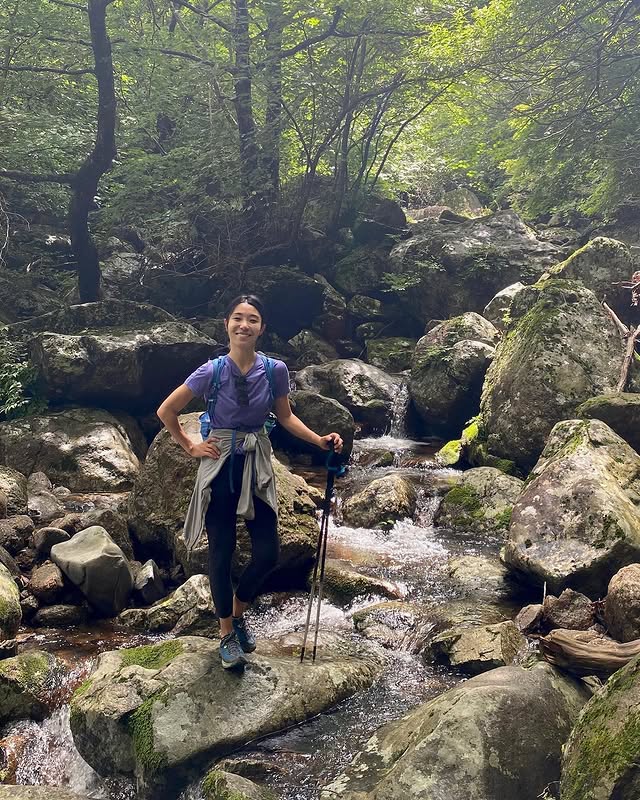
The park spans three provinces with trails connecting major peaks in routes that take days to complete correctly.
Buddhist temples in the valleys have served as meditation centres for over a thousand years, and spending a night at mountain shelters watching stars from 1,900-meter peaks creates memories that last forever.
Rare experiences in Jirisan National Park
- Tackle the challenging ridge trail connecting major peaks
- Visit Hwaeomsa Temple and its three-story stone pagoda
- Hike to Cheonwangbong Peak, the park’s highest point
- Explore Baemsagol Valley for waterfalls and autumn colours
- Stay at mountain shelters for unforgettable sunrise views
- Location: South Jeolla, South Gyeongsang, and North Jeolla provinces
- Timing: Park is accessible 24/7; the recommended hiking season is April to November
Starfield COEX Mall and Library
COEX Mall would impress just for being Asia’s largest underground shopping complex. But the Starfield Library transformed it into a global social media phenomenon.
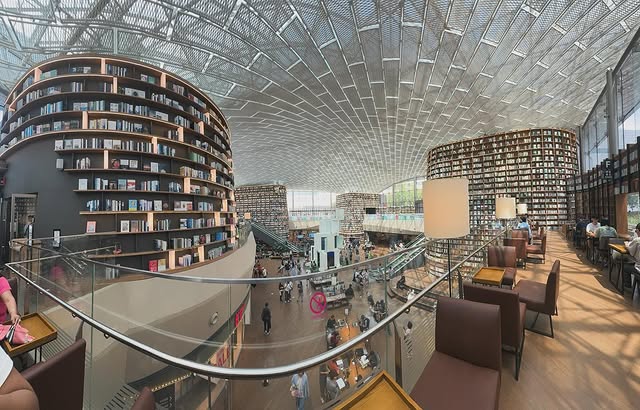
This two-story library features shelves that hold 50,000 books.
What makes COEX special beyond the library is its complex functions as Gangnam’s cultural heart, featuring an aquarium showcasing 40,000 marine creatures.
Then there are K-pop entertainment company venues where you might spot idols. And there are convention halls hosting automotive shows and gaming tournaments.
Discover luxury brands and premium things in Starfield COEX Mall and Library
- Marvel at the stunning Starfield Library architecture and take photos
- Visit the COEX Aquarium featuring 40,000 marine creatures
- Shop at hundreds of international and Korean brand stores
- Catch K-pop events and exhibitions at COEX convention halls
- Dine at diverse restaurants from traditional Korean to international cuisine
- Location: Gangnam District, Seoul; Samseong Station (Line 2 Metro)
- Timing for Mall & Library: 10:30 AM – 10:00 PM (weekdays are less crowded)
Tongyeong-si
Tongyeong-si has earned its reputation as Korea’s “Naples of the East” through its stunning coastal scenery, which has inspired generations of artists, musicians, and poets.
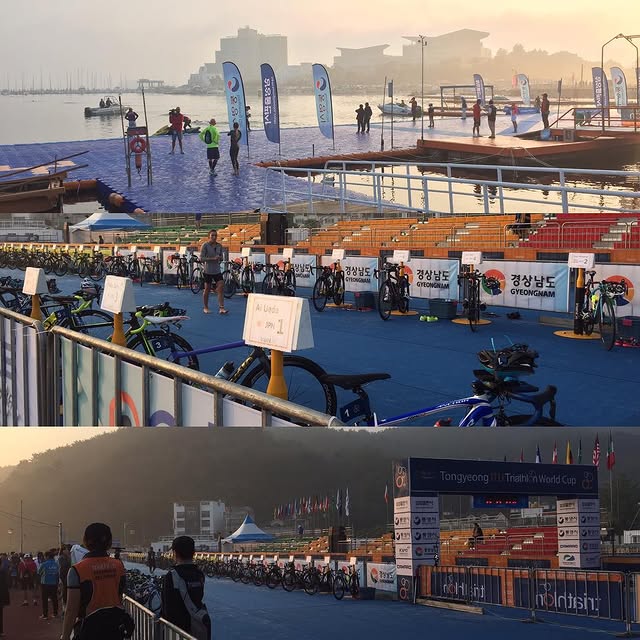
There is a cable car ride to Mireuksan Mountain that offers the best views over the islands scattered across the waters. And, this ride draws most of the visitors to Tongyeong.
Spend a quiet day in Tongyeong-si by doing these
- Ride the Tongyeong Cable Car to Mireuksan Mountain summit
- Take ferries to beautiful nearby islands like Bijindo and Hansando
- Visit Dongpirang Village with its colourful murals and art installations
- Explore the market for fresh seafood and local delicacies
- Tour historic sites related to Admiral Yi Sun-sin’s naval victories
- Location: South Gyeongsang Province. 4 hours from Seoul & 2 hours from Busan
- Timing for Cable Car: 9:30 AM – 5:00 PM.
Banpo Bridge Rainbow Fountain
Banpo Bridge is the Guinness-certified longest bridge fountain. It features a fountain that shoots 190 tons of water per minute from 380 nozzles on both sides, creating waterfalls of light choreographed to music.
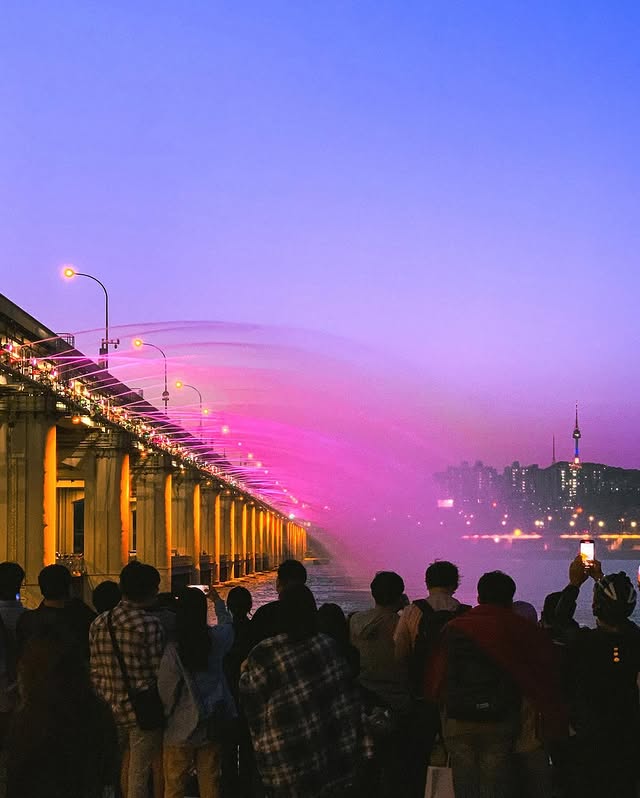
The fountain transforms an ordinary infrastructure into evening entertainment. You can watch it from Banpo Hangang Park, which also features a convenience store and picnic spot.
Engage yourself in the Banpo Bridge Rainbow Fountain
- Watch the fountain show from Banpo Hangang Park below the bridge
- Take a Han River cruise for unique fountain views from the water
- Enjoy picnics on the riverside while watching the show
- Photograph the colorful illuminated fountain displays
- Combine with nearby Sebitseom (floating islands), visit
- Location: Seocho District, Seoul; along the Han River near the Express Bus Terminal
- Fountain Show Timing: 12 PM, 8 PM, 7:30 PM, 8:30 PM, and 9 PM
Conclusion
It doesn’t matter how many days you stay; there are endless attractions in South Korea to explore.
You need to have a clear idea of how you want to spend your time when on vacation. Don’t rush to cover every tourist spot in South Korea. Just stick to some of the must-see places that you like the most and enjoy your days.
If you are planning to visit South Korea and want help planning your trip, you can reach out to us.
Frequently Asked Questions About Places to Visit in South Korea
What is the best time to visit South Korea for vacation?
April to June and September to November are the right times to travel to South Korea.
From April, you will experience spring, where you can experience cherry blossoms with temperatures ranging from 15°C to – 26°C.
September onwards, you have autumn. This time, you have beautiful fall foliage in vibrant reds, oranges, and yellows. And the temperature ranges from 19°C to – 26°C. Remember, by mid-November, it gets cold.
How many days are enough in South Korea as a traveller?
It is good to stay up to 10 days in South Korea. You can divide these days to cover all the best cities.
- 3 – 4 days in Seoul for exploring palaces, markets, and neighbourhoods.
- 2 – 3 days in Busan for beaches and temples
- 2 – 3 days on Jeju Island to see natural wonders
If you have additional time, take day trips like the DMZ, Gyeongju, or Jeonju.
What are some famous places to visit in South Korea for a tourist?
Seoul is a must-visit city in South Korea, and some mandatory tourist activities are going to Gyeongbokgung Palace, Bukchon Hanok Village, and N Seoul Tower.
Then you have Jeju Island for its volcanic landscapes and beaches, Busan’s Haeundae Beach and Gamcheon Culture Village, and a DMZ tour for historical perspective.
Do Indians need a visa to visit South Korea?
Yes, a visa is mandatory to visit South Korea for an Indian passport holder. When you take a South Korea tourist visa, you can spend up to 90 days.
This tourist visa will cost you approximately 5,300 INR, including the VFS fee. To get the visa, there are a few necessary things you must have with you:
- A valid passport with 6 months’ validity
- Recent passport-size photos
- Bank statements
- Income Tax Returns (ITR)
- Flight details
- Accommodation confirmation
Is South Korea safe for solo travelers?
Yes, South Korea is safe to visit for any kind of traveller. This country has less crime and a great CCTV presence in all the shops and streets.
Even the elders and youngsters are very respectful and helpful when you reach out to them. However, you need to be alert and take responsibility for yourself.